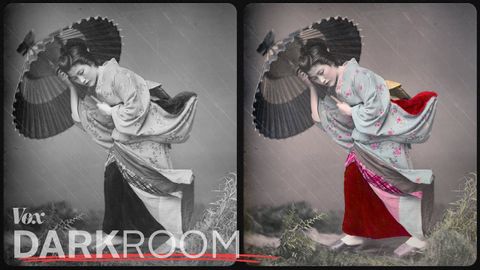カラー写真がいかに日本を世界に紹介したか (How colorized photos helped introduce Japan to the world)
林宜悉 が 2020 年 10 月 08 日 に投稿  この条件に一致する単語はありません
この条件に一致する単語はありませんUS /ˈɛpɪˌsod/
・
UK /'epɪsəʊd/
US /ɪˈlæbəret/
・
UK /ɪ'læbəreɪt/
- v.t./i.詳細に述べる;精巧に作る;詳しく展開する
- adj.手の込んだ : 精巧な : 入念な
US /ædˈvæntɪdʒ/
・
UK /əd'vɑ:ntɪdʒ/
- n. (c./u.)有利な点;強み : 長所;利益
- v.t.利用する
エネルギーを使用
すべての単語を解除
発音・解説・フィルター機能を解除
